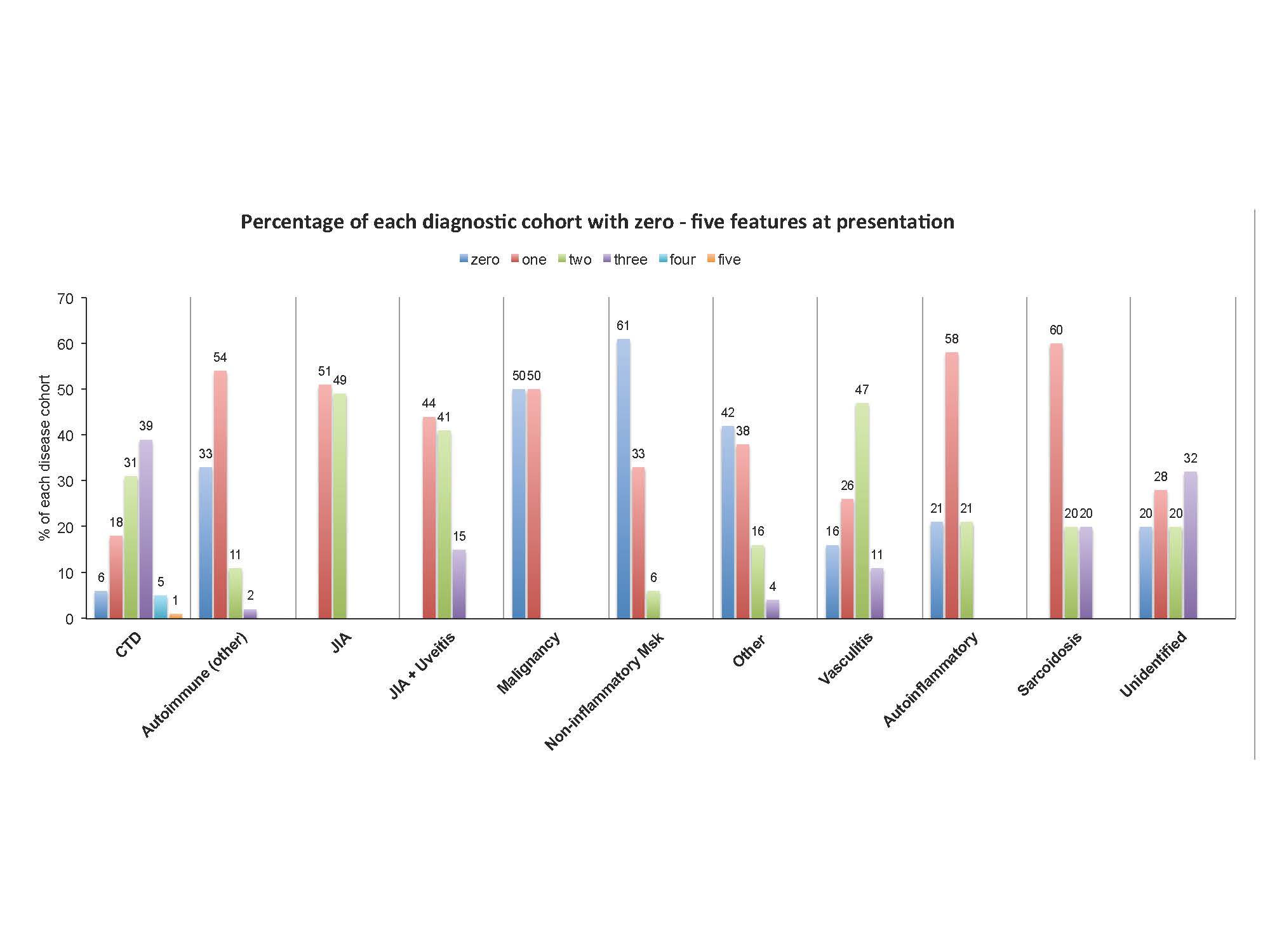Session Information
Date: Sunday, November 10, 2019
Title: Pediatric Rheumatology – ePoster I: Basic Science, Biomarkers, & Sclerodermic Fever
Session Type: Poster Session (Sunday)
Session Time: 9:00AM-11:00AM
Background/Purpose: Antinuclear antibodies (ANA) are autoantibodies that recognise cellular antigens found predominantly in the cell nucleus. They are associated with numerous autoimmune diseases such as systemic lupus erythematosus (SLE), but may also be found in infectious diseases, malignancies and apparently healthy individuals.
ANA is routinely requested as part of an initial work-up for autoimmune conditions. The titre of ANA required before a sample is considered “positive” varies between laboratories and is dependent on factors such as the technique used. In healthy children (5-18%), ANA titres of 1/80 to 1/320 have been reported. Over time a proportion will decrease in titre or disappear. However, some may persist raising concerns about the possibility of autoimmune disease in evolution. A prospective study of healthy children with positive ANA found that children who developed autoimmune disease had clinical features at presentation that were suspicious for such an outcome. Therefore, the usefulness of a positive ANA result for diagnosing autoimmune conditions is limited without clinical correlation.
Our aim was to assess whether high ANA titre and clinical features at first presentation could predict final diagnosis
Methods: Single centre (Great Ormond Street Hospital for Children GOSH), retrospective study. The immunology laboratory at GOSH provided a list of positive ANA results (using indirect immunofluorescence) reported by their laboratory from January 2013 to July 2018. Results were filtered to exclude duplicate results for the same patient, creating a list of patients with ANA titre results from their first contact with our hospital. A retrospective chart review was performed to ascertain presence or absence of clinical features at presentation under the following titles, arthritis, skin involvement, eyes, CNS involvement and raynaud’s. We then reviewed the last clinical contact to document confirmed diagnosis and grouped these into 11 categories such as Connective Tissue Disease (CTD), JIA and so on.
Results: We performed a retrospective chart review on 1354 children (67% female; median age 7.5 years (0.1-17.5); median follow-up 4.8 years (0-18)) with positive ANA results (titres 1/160, 1/320, 1/640, 1/1280, 1/2560 and >1/2560). Figure 1A summarises the ANA titres observed in our cohort, and 1B the range of final diagnoses made. Figure 2A reports ANA titres at first presentation in relation to final diagnosis. A titre of 1/640 or above was most commonly seen ( >50%) in children with an autoimmune rheumatology condition (JIA, JIA and uveitis or a CTD). In fact, children with the highest titre ( >1:2560) were significantly more likely to be diagnosed with one of these conditions (figure 2B). Finally, we looked at the number of presenting features and correlated with final diagnosis (figure 3). Those diagnosed with a CTD were most likely to present with 2-5 clinical features (chi square p< 0.0001). Conclusion: This study suggests that, patients presenting with higher ANA titres and a combination of clinical features at presentation should be assessed systemically and followed-up as they may have increased risk of an autoimmune rheumatological diagnosis.
To cite this abstract in AMA style:
Kul Cinar O, Foley C, Al-Hussain A, Gilmour K, Buckland M, Al-Obaidi M. Can High ANA Titre Combined with Clinical Features Predict Developing Autoimmune Conditions in Children? [abstract]. Arthritis Rheumatol. 2019; 71 (suppl 10). https://acrabstracts.org/abstract/can-high-ana-titre-combined-with-clinical-features-predict-developing-autoimmune-conditions-in-children/. Accessed .« Back to 2019 ACR/ARP Annual Meeting
ACR Meeting Abstracts - https://acrabstracts.org/abstract/can-high-ana-titre-combined-with-clinical-features-predict-developing-autoimmune-conditions-in-children/



